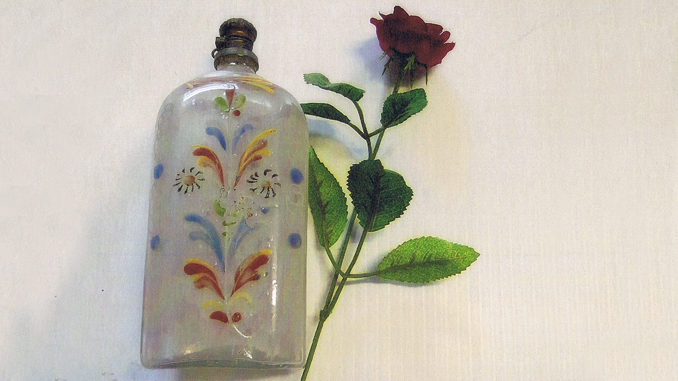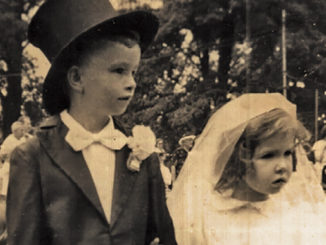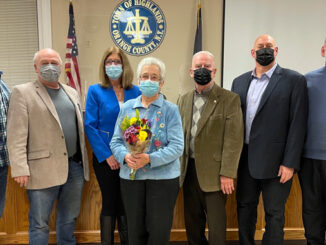
Then & Now
by Highlands Historian Stella Bailey
With these trying times people are confused, distressed and frightened. The world seems upside down and we are all witness to fears we thought we would never experience in our lifetime. It seems very fitting that here and now is a story of caring, generosity and kindness.
In 1750, Baron William Henry Von Stiegel journeyed from Cologne, Germany to live in Manheim, Penn. He eventually became a colonial glass manufacturer, making of various types of high end glassware that was and is still highly cherished. An antique, hand-blown, enameled flask, such as the one shown, currently sells for around $560. However, some of his glassware goes for much higher and is valued by antique dealers and connoisseurs of precious glass.
In 1772 he deeded a plot for a church and stipulated that the congregation pay “one red rose” annually, in the month of June, forever, if the same shall be lawfully demanded by the heirs, executors or assigns.
A newspaper column from 1944 states that for 172 years church officials of the Zion Lutheran Church of Manheim, Penn. have faithfully gone through the ceremony of presenting a rose. By payment of one fresh rose, the church members cleared up their rent for another whole year!
The Tulpehocken Trinity Reformed Church of Richland settles its rent bill in the same odd and fragrant manner each year. In 1745, Caspar Winstar, a famous button manufacturer in Philadelphia deeded 100 acres to the congregation, the only compensation to be one red rose a year “forever”.
Wouldn’t it be wonderful if this quaint idea caught on and those of means and generosity used their benefits for the health and welfare of others? I am sure it does and we just don’t learn enough about it to say ‘Thank you’.



